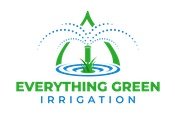The Importance of Winterizing Your Irrigation System: Tips for a Healthy Spring Lawn
As winter approaches, many homeowners shift their focus to preparing their homes and landscapes for the colder months. One essential task that should not be overlooked is winterizing your irrigation system. Properly winterizing your system ensures that it remains protected during freezing temperatures and functions optimally when spring arrives. In this blog post, we will delve into the importance of winterizing your irrigation system and provide expert tips to help you prepare for a healthy and vibrant lawn come springtime.
Preventing Frozen Pipes and Components:
Freezing temperatures can wreak havoc on your irrigation system. When water freezes, it expands and can cause pipes and components to crack or burst. Winterizing your system involves draining all water from the pipes, valves, and sprinkler heads to prevent this damage. By taking the necessary precautions, you can avoid costly repairs and ensure your system's longevity.
Protecting the Pump and Backflow Preventer:
The pump and backflow preventer are critical components of your irrigation system. Neglecting to winterize them can lead to severe damage. Proper winterization involves shutting off the pump and draining it of any remaining water. Additionally, the backflow preventer should be insulated and covered to shield it from freezing temperatures. These steps will help safeguard these vital parts and extend their lifespan.
Preserving the Controller and Sensors:
The controller and sensors are the brains of your irrigation system. They regulate the timing and amount of water delivered to your lawn. Before winter arrives, it is important to disconnect the controller from the power source and store it indoors. This prevents the controller from being exposed to freezing temperatures, which can damage its electronic components. Similarly, sensors should be removed, cleaned, and stored properly.
Clearing and Protecting Sprinkler Heads:
Properly winterizing your irrigation system includes clearing and protecting sprinkler heads. Any remaining water in the heads can freeze and cause damage. Start by turning off the water supply and allowing the system to drain completely. Inspect each sprinkler head to ensure there is no debris or water left inside. Finally, cover the heads with protective caps or insulating materials to shield them from the elements.
Spring Start-Up Readiness:
By winterizing your irrigation system, you are setting the stage for a smooth and efficient spring start-up. When the warmer weather returns, you can easily reactivate your system without any surprises. Proper winterization not only helps prevent damage but also saves you time and money when it's time to prepare your lawn for the growing season.
Conclusion:
Winterizing your irrigation system is a crucial step in maintaining a healthy and vibrant lawn. By preventing freezing damage to pipes, protecting essential components, and preparing for spring start-up, you ensure the longevity and efficiency of your system. Make winterization a priority and follow the expert tips outlined in this blog post. With proper care, your irrigation system will be ready to deliver lush green lawns when spring arrives.
